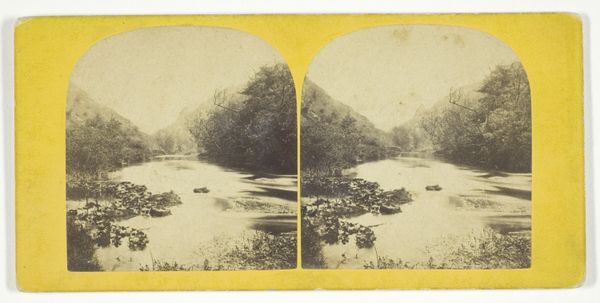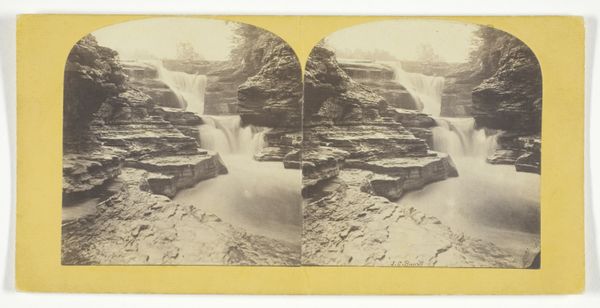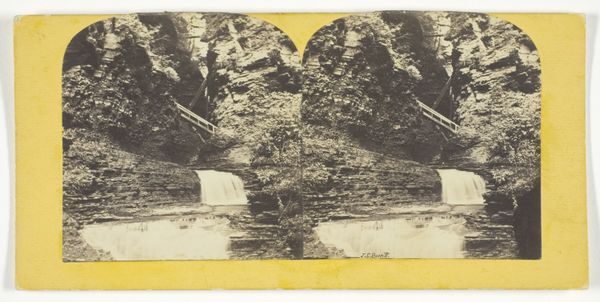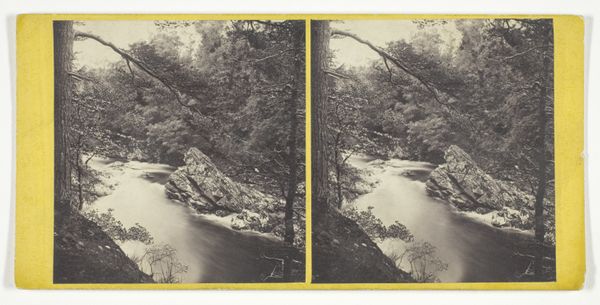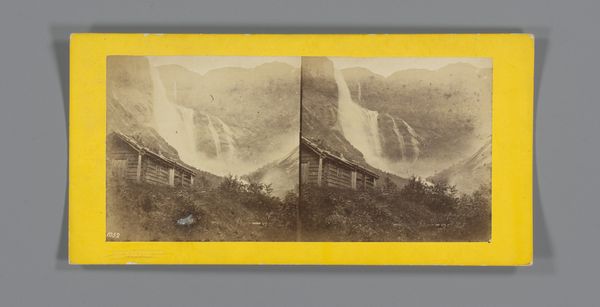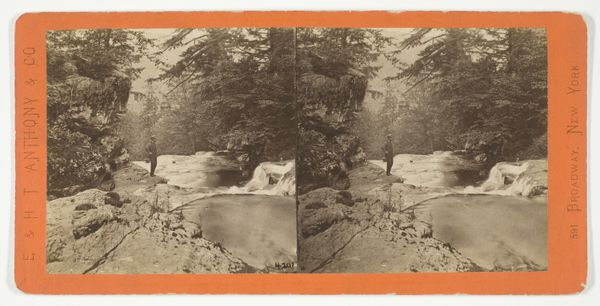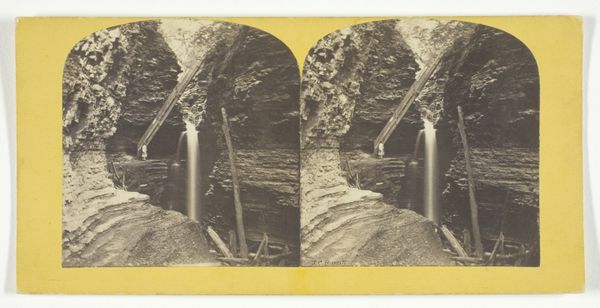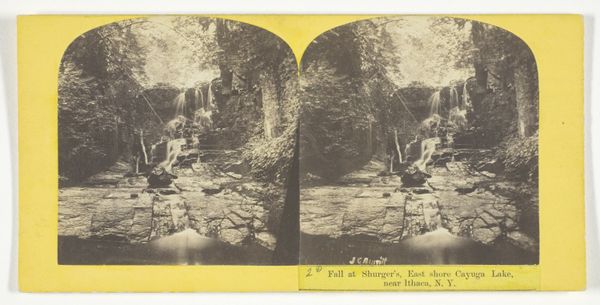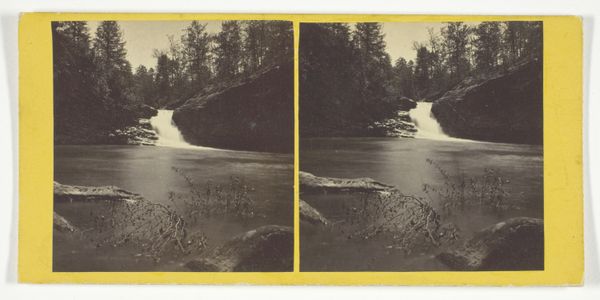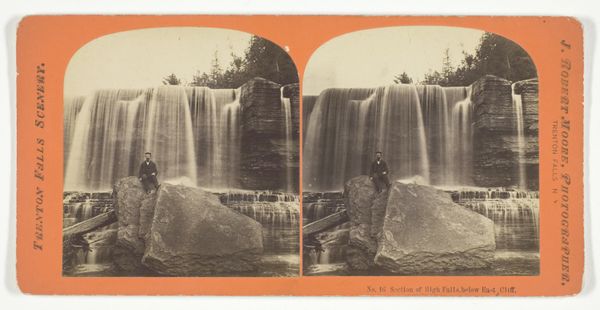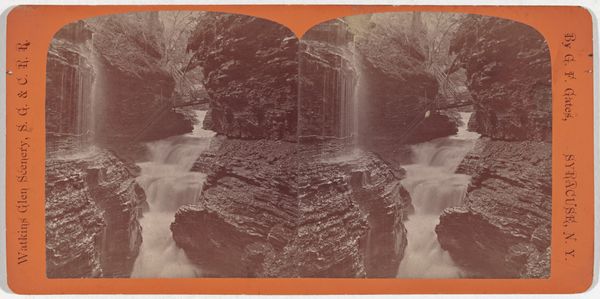
Fall Creek, Ithaca, N.Y. 2d, or Forest Fall, 60 feet high, from north bank 1860 - 1865
0:00
0:00
Dimensions: 7.5 × 7.2 cm (each image); 8.4 × 17.1 cm (card)
Copyright: Public Domain
Curator: Welcome to The Art Institute of Chicago. We're standing before "Fall Creek, Ithaca, N.Y. 2d, or Forest Fall, 60 feet high, from north bank," a gelatin silver print dating between 1860 and 1865, attributed to J.C. Burritt. Editor: It's a stereo card, so the first thing I notice is the almost sculptural depth created. The way the waterfall and rock formations are captured is remarkably balanced in the dual images. Curator: Indeed, these stereo views were incredibly popular. Mass-produced and widely disseminated, they provided folks with affordable access to striking landscapes. Photography, in this way, democratized access to scenes previously only viewed in painting, becoming a kind of 'tourism for the masses.’ Editor: I'm struck by the monochromatic palette; it almost abstracts the landscape into shapes and forms. Look at the interplay of light and shadow on the cascading water. The texture becomes almost tangible through the shades of grey, heightening the romantic drama. Curator: Absolutely. The romantic sensibilities are definitely at play here. Photographers were keen to showcase the sublime power and grandeur of nature. This image ties into the wider 19th-century idealization of landscape as both untouched and a national symbol. Editor: Yes, the almost geometrical layers of the rock contrasts perfectly with the flow of the falls, creating a stark tension, but I keep thinking the limited range is quite captivating—it strips away the distraction of colour. Curator: Considering that the natural landscape had symbolic significance linked to notions of American exceptionalism and manifest destiny, images such as these further cemented the concept of American identity during a formative period of the country's history. Editor: You’ve certainly given me another dimension for consideration! Curator: It's all about seeing the larger story! Thank you for sharing your perceptive observations on the structure of the artwork. Editor: Likewise. This highlights how art can connect both the personal aesthetic with the grand theatre of history.
Comments
No comments
Be the first to comment and join the conversation on the ultimate creative platform.

